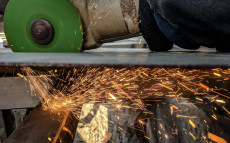- pathfindersAI
- Job Profile
Aircraft Structure, Surfaces, Rigging, and Systems Assemblers
Summary
Aircraft Structure, Surfaces, Rigging, and Systems Assemblers: A Comprehensive Career Overview
What They Do
Aircraft Structure, Surfaces, Rigging, and Systems Assemblers are specialized professionals within the aviation industry. Their primary role revolves around the meticulous assembly, installation, and maintenance of critical aircraft components. These assemblers ensure the structural integrity and optimal functioning of airplanes by piecing together various parts, such as the fuselage, wings, flaps, ailerons, and landing gear. By adhering to detailed blueprints and specifications, they play a pivotal role in the production and upkeep of safe, reliable, and efficient aircraft.
Job Responsibilities
The job responsibilities of Aircraft Structure, Surfaces, Rigging, and Systems Assemblers are multifaceted and require a high degree of precision and attention to detail. On a daily basis, these assemblers might engage in the installation of hydraulic and pneumatic systems, ensuring that all moving parts are correctly aligned and functioning. They are responsible for reading and interpreting detailed manufacturing and engineering drawings, which guide the installation and alignment of aircraft components. Moreover, they conduct rigorous testing to identify any potential issues or faults in the assembly process, making necessary adjustments to meet stringent industry standards. Collaboration with engineers, inspectors, and other team members is crucial to address and resolve any problems that arise during the assembly process.
Essential Skills
Success in this career demands a blend of technical expertise and practical skills. Precision and attention to detail are paramount, as even the slightest error in assembly can have significant implications on the safety and performance of the aircraft. A solid foundation in mechanical knowledge is essential, alongside familiarity with tools and machinery used in aviation manufacturing. Proficiency in reading and interpreting technical diagrams and blueprints is also crucial. Furthermore, effective communication skills are important for liaising with colleagues and ensuring that complex assembly tasks are executed accurately.
Educational Pathways
The educational pathways for aspiring Aircraft Structure, Surfaces, Rigging, and Systems Assemblers generally begin with a high school diploma or equivalent. Courses in mathematics, physics, and engineering fundamentals can provide a strong foundation. Post-secondary education is often necessary, with many individuals pursuing vocational training or associate degrees in fields such as aviation maintenance technology or aerospace engineering. These programs typically include both classroom instruction and hands-on training, covering essential topics like aircraft structure, materials, and assembly techniques. Additionally, many employers require assemblers to obtain industry-specific certifications that validate their skills and knowledge.
Career Prospects
Career prospects for Aircraft Structure, Surfaces, Rigging, and Systems Assemblers are closely tied to the broader aviation industry's growth and development. As global air travel and the demand for new aircraft continue to rise, the need for skilled assemblers is expected to remain strong. Entry-level positions offer opportunities to gain valuable experience, and with time, experience, and additional certifications, assemblers can advance to more senior roles, including supervisory positions or specialized technical areas. Employment can be found in a variety of settings, such as commercial aircraft manufacturing companies, defense contractors, and maintenance repair organizations.
Conclusion
In conclusion, the role of Aircraft Structure, Surfaces, Rigging, and Systems Assemblers is crucial in ensuring the safety, reliability, and efficiency of modern aviation. This career demands a combination of technical knowledge, precision, and the ability to work collaboratively within a highly regulated industry. With a well-defined educational pathway and promising career prospects, individuals interested in this field can look forward to a stable and rewarding career. The critical contributions made by these professionals underpin the continuous progress and innovation within the aviation industry, making their work both impactful and essential.
Video
Compensation
| State | Median Salary | Median Hourly | Positions |
|---|---|---|---|
| AL | 60,490 | 29.08 | 770 |
| AZ | 60,880 | 29.27 | 860 |
| AR | 39,210 | 18.85 | 330 |
| CA | 58,810 | 28.28 | 1,890 |
| CO | 60,130 | 28.91 | 320 |
| CT | 69,270 | 33.30 | 290 |
| FL | 52,510 | 25.25 | 1,080 |
| GA | 63,490 | 30.52 | 2,880 |
| MI | * | * | 110 |
| MS | 48,450 | 23.29 | 140 |
| NE | * | * | 200 |
| NM | 59,050 | 28.39 | 30 |
| NY | 51,050 | 24.54 | 100 |
| NC | 48,330 | 23.24 | 530 |
| OH | 42,500 | 20.44 | 110 |
| OK | 47,770 | 22.97 | 400 |
| PA | 75,010 | 36.06 | 1,290 |
| TN | 44,270 | 21.29 | 110 |
| TX | 77,920 | 37.46 | 3,180 |
| UT | 72,860 | 35.03 | 120 |
| WA | 88,710 | 42.65 | 4,690 |
| WI | 58,630 | 28.19 | 260 |
Similar Occupations
In this area you will find other occupations that are close to the one you were viewing in tasks, knowledge and work environment. If the primary job profile you are viewing isn't quite to your liking, take a look around and see what else is available.
Basic and Premium Accounts have more alternative occupations available than the Free account.

Millwrights - 49-9044.00
Millwrights are specialized craftsmen responsible for installing, maintaining, and repairing heavy machinery and industrial equipment in factories, power plants, and construction sites. They ensure precise alignment and efficient operation of mechanical systems through tasks such as leveling, aligning, and assembling various components.
-
$62,980/yr
Median Pay -
37,930
Number of Jobs

Sheet Metal Workers - 47-2211.00
A Sheet Metal Worker fabricates, installs, and repairs metal products, ranging from heating and cooling ducts to kitchen equipment and roofs, using tools such as shears, soldering irons, and welding machines. They read blueprints and measure, cut, and bend metal pieces to precise specifications to ensure proper fit and function.
-
$58,780/yr
Median Pay -
116,190
Number of Jobs